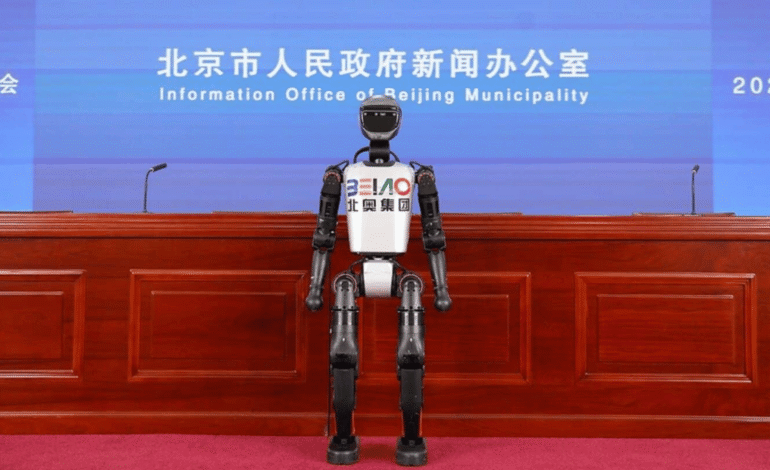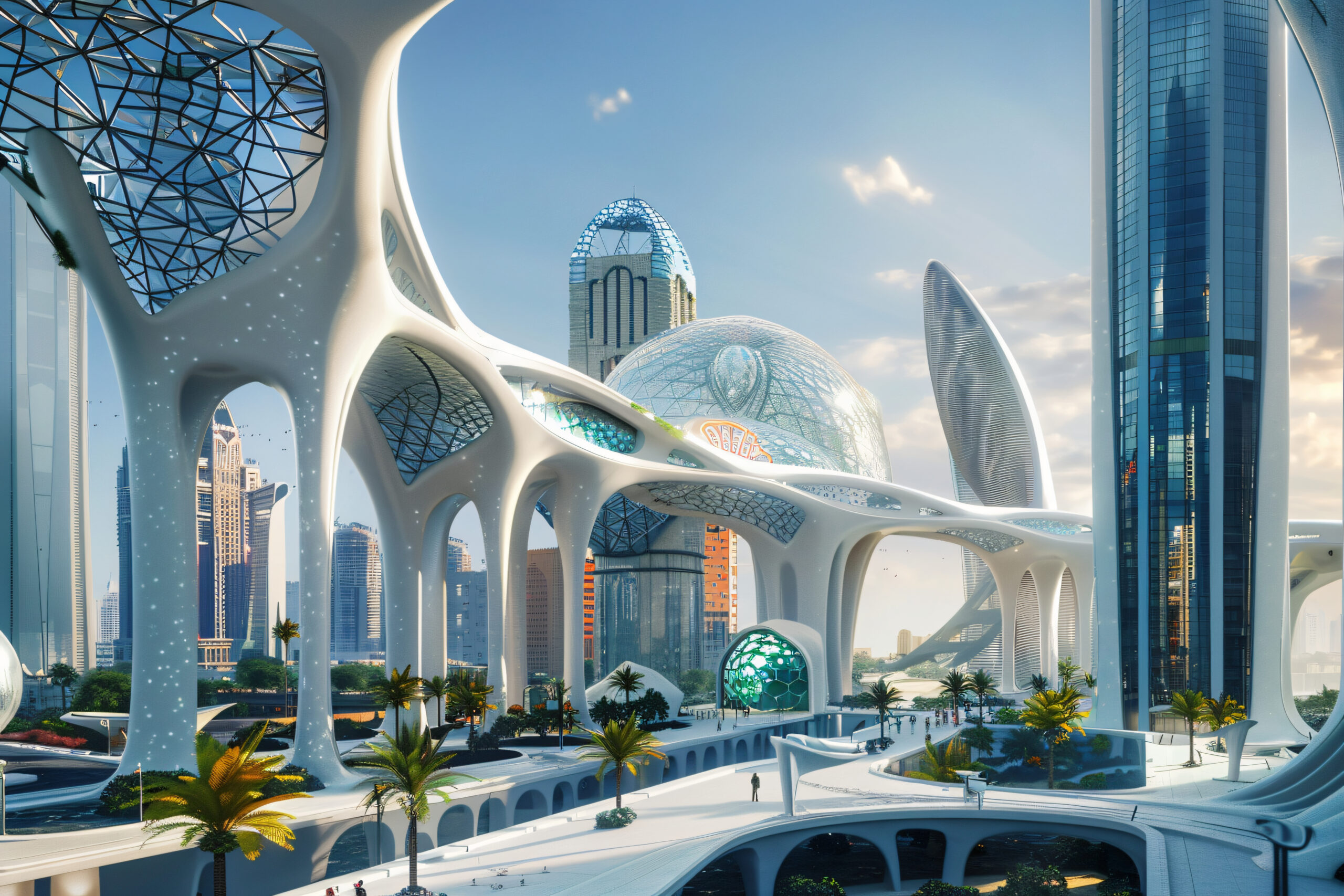2025 World Humanoid Robot Games in Beijing: Tech Meets Sport

The 2025 World Humanoid Robot Games began in Beijing on Thursday, marking a historic moment where technology and sports meet. This is the first global competition focused entirely on humanoid robots a type of robot designed to look and move like a human.
Held at the National Speed Skating Oval, a landmark built for the Beijing Winter Olympics, the Games bring together 280 teams from 16 countries. Nations like the United States, Germany, Italy, Brazil, Japan, and China are all represented.
The competition runs from Friday to Sunday and features 26 events. These events are designed to test both physical ability and real-world skills. For three days, audiences in Beijing and viewers online will see robots running, jumping, playing football, and performing tasks that could soon become part of our daily lives.
Opening Ceremony Blends Culture and Innovation
The opening ceremony was more than just a formal start it was a show of creativity, culture, and engineering skill.
Robots danced to hip-hop music, performed traditional martial arts, and even played musical instruments such as guitars, keyboards, and drums. These performances combined the energy of a sports opening with the innovation of advanced robotics.
One of the highlights was a football demonstration where robots not only scored goals but celebrated with backflips and victory poses. In another moment, robots acted as fashion models, wearing hats and clothing on a mini runway. Not everything went smoothly one robot stumbled and had to be assisted but these moments made the crowd cheer even louder.
The ceremony made it clear: these Games are about more than competition. They are a stage for the future of human-robot interaction.
Three Main Types of Challenges
The Games are divided into three major areas:
- Sports and Athletics
In this category, robots compete in events similar to the Olympics. These include:
- Sprinting over short distances
- Long jump competitions
- Football matches with small teams
- Boxing bouts using programmed movements
- Table tennis matches that require fast reaction times
Each sport challenges the robots’ speed, balance, and coordination. For example, in the sprint, robots must run without falling, while in table tennis, they need to track a fast-moving ball and respond within seconds.
- Practical and Service Tasks
This section tests how robots could be used in everyday life. Events include:
- Sorting medicines in a pharmacy setting
- Moving boxes and packages in a warehouse simulation
- Cleaning floors and surfaces in different environments
These challenges require more than just movement they need problem-solving, object recognition, and careful planning.
- Creative and Performance Displays
Here, robots showcase agility and artistic expression. They perform free exercises, synchronized dance routines, and even act out short scenes. These tasks show how robots can be part of entertainment, marketing, or education.
Unexpected Mishaps and Smart Recoveries
One of the most exciting parts of the Games is seeing how robots handle problems. During football matches, some robots lost their balance and fell. In the 1500-meter race, one robot collapsed mid-run, but to everyone’s surprise, it stood up again without help.
This ability to recover from a fall on its own called autonomous recovery is a big step forward for robotics. It means that in real life, these robots could keep working even after making a mistake.
Organizers say these moments are not failures. Instead, they are valuable learning experiences. Every fall, every slow reaction, and every recovery gives engineers new data to improve robot design.
Why Beijing is Hosting This Event
China’s goal with the World Humanoid Robot Games is to push the limits of robotics technology. Officials say sports are a good way to test important abilities like:
- Perception how robots see and understand their surroundings
- Decision-making how they choose the best action
- Control how smoothly and accurately they move
The same skills can be used for real-world purposes. A robot that can run across a field might also be able to deliver packages quickly. A robot that can play football might also navigate a busy hospital or office without bumping into people.
China is investing heavily in artificial intelligence and robotics. The government is planning a 1 trillion yuan (about $137 billion) fund to help robotics companies grow. Events like this show the public and the world how far technology has come.
Global Competition with a Shared Goal
Although the Games are in Beijing, the technology and lessons learned are meant to benefit everyone. The 280 teams include 192 university groups and 88 companies from around the world. Many are using robots from well-known manufacturers like Booster Robotics, Unitree, and Fourier.
This mix of students, researchers, and companies creates a space for both learning and competition. Younger teams can learn from industry experts, and companies can see fresh ideas from universities.
Linking to the Middle East and UAE
For countries in the Middle East, especially the United Arab Emirates, events like the World Humanoid Robot Games are a source of inspiration.
The UAE has its Artificial Intelligence Strategy 2031, which aims to make AI part of everyday life in areas like:
- Smart transportation
- Healthcare robots
- Education technology
- Space exploration
By watching the Games, UAE researchers and companies can see new ways to use humanoid robots. For example, a robot that sorts medicines in Beijing could be adapted for use in Dubai hospitals. A robot that cleans competition areas could help keep airports in Abu Dhabi spotless.
From the Lab to the Real World
Many of the robots in the Games started as research projects in laboratories. Now they are moving into real-world situations. The Beijing event is a step toward making humanoid robots part of everyday life.
Tasks like lifting heavy boxes, delivering items, or cleaning are already being tested in factories and hotels. The Games push these abilities further by adding time limits, unexpected challenges, and competitive pressure.
Audience Reactions and Global Interest
Crowds in Beijing have been excited, cheering for every successful move and laughing during the occasional falls. The event has also attracted attention online, with videos of robot football and dancing being shared worldwide.
Technology journalists, robotics experts, and everyday viewers have praised the Games for showing the fun side of advanced robotics while also highlighting real technological progress.
Looking Ahead: The Future of Humanoid Robot Games
Organizers hope to make the Games a regular event, inviting even more countries to participate. They also plan to expand the types of challenges, adding more real-life scenarios like rescue missions, farming tasks, or construction work.
The long-term goal is to speed up the development of robots that can work safely and effectively alongside humans in many industries.
Why This Matters to You
Whether you live in Beijing, Dubai, or New York, humanoid robots are part of the future. Events like the 2025 World Humanoid Robot Games show how quickly technology is moving.
The competition is not just about winning medals it is about creating robots that can help in hospitals, schools, offices, and even homes. The skills being tested today could be saving lives or improving workplaces tomorrow.







